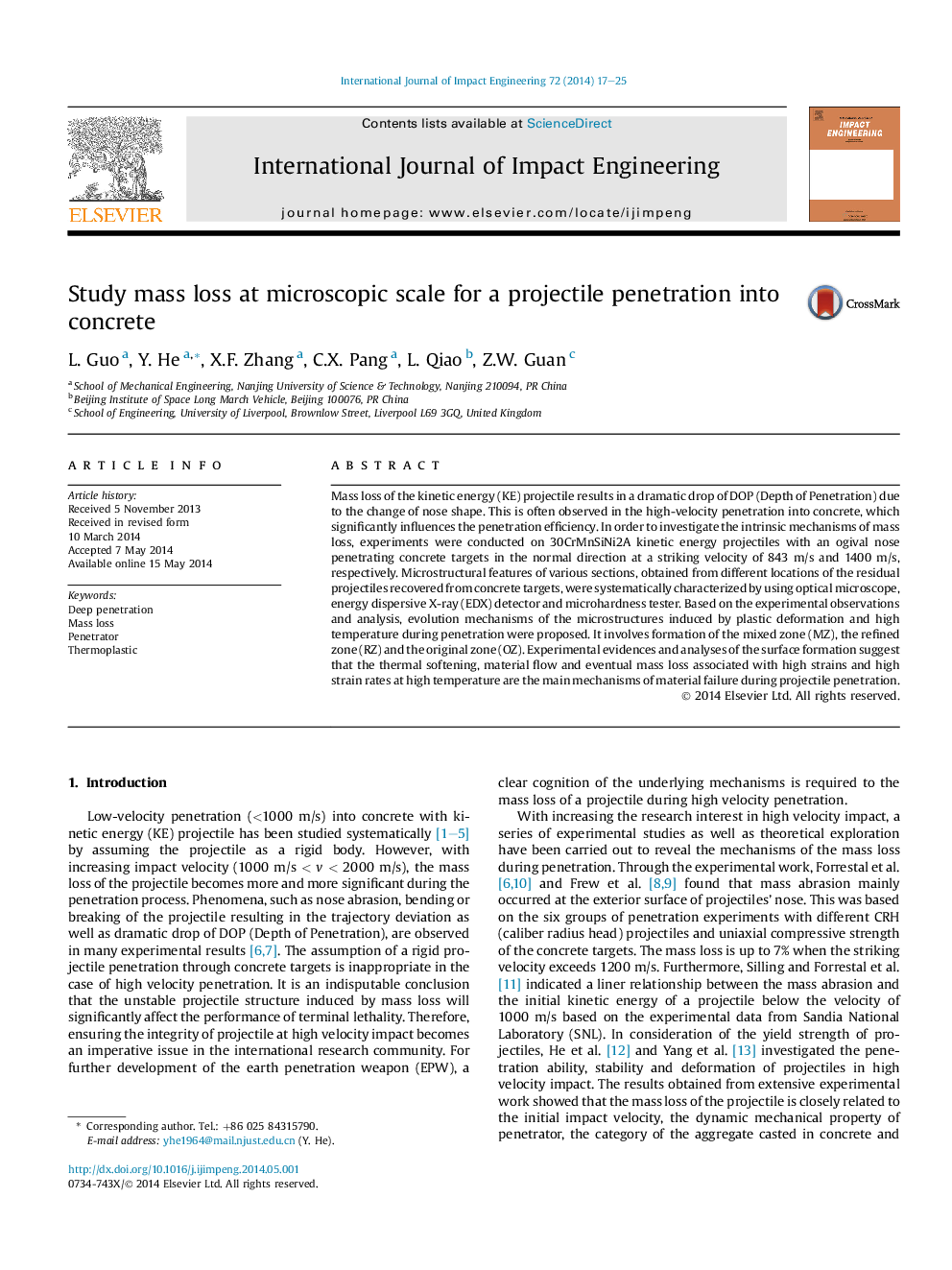| Article ID | Journal | Published Year | Pages | File Type |
|---|---|---|---|---|
| 779324 | International Journal of Impact Engineering | 2014 | 9 Pages |
•Mass loss of projectile significantly influences the penetration efficiency.•Plastic deformation and high temperature generate the microstructure evolution.•The evolution of the affected surface layer can be subdivided into three sections.•Thermal softening, material flow and mass loss are the main failure mechanism.
Mass loss of the kinetic energy (KE) projectile results in a dramatic drop of DOP (Depth of Penetration) due to the change of nose shape. This is often observed in the high-velocity penetration into concrete, which significantly influences the penetration efficiency. In order to investigate the intrinsic mechanisms of mass loss, experiments were conducted on 30CrMnSiNi2A kinetic energy projectiles with an ogival nose penetrating concrete targets in the normal direction at a striking velocity of 843 m/s and 1400 m/s, respectively. Microstructural features of various sections, obtained from different locations of the residual projectiles recovered from concrete targets, were systematically characterized by using optical microscope, energy dispersive X-ray (EDX) detector and microhardness tester. Based on the experimental observations and analysis, evolution mechanisms of the microstructures induced by plastic deformation and high temperature during penetration were proposed. It involves formation of the mixed zone (MZ), the refined zone (RZ) and the original zone (OZ). Experimental evidences and analyses of the surface formation suggest that the thermal softening, material flow and eventual mass loss associated with high strains and high strain rates at high temperature are the main mechanisms of material failure during projectile penetration.
